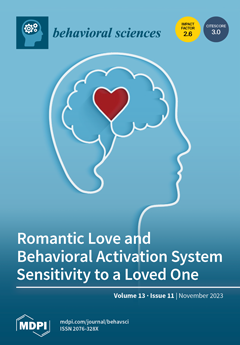(1) Background: China released regulations on school bullying prevention and control in 2017; however, current research on school bullying in China focuses on exploring influencing factors and lacks empirical research on the effectiveness of anti-bullying policies in schools. The objective of this study
[...] Read more.
(1) Background: China released regulations on school bullying prevention and control in 2017; however, current research on school bullying in China focuses on exploring influencing factors and lacks empirical research on the effectiveness of anti-bullying policies in schools. The objective of this study was to use an empirical model to explore the association between bullying prevention and control measures and secondary school students’ bullying victimization and multiple bullying victimization in Chinese schools. (2) Methods: Data were derived from the 2019 Surveillance of Common Diseases and Health Influencing Factors among Students in Jiangsu Province. The school’s bullying prevention and control measures, which was the independent variable, were obtained in the form of a self-report questionnaire and consisted of five measures: the establishment of bullying governance committees, thematic education for students, thematic training for parents, special investigations on bullying, and a bullying disposal process. Bullying victimization and multiple bullying victimization, which was the dependent variable, were obtained through a modified version of the Olweus bullying victimization questionnaire. In order to better explain the differences in the results, this study constructed multilevel logistic regression models to test the association between school bullying prevention and control measures and the rates of bullying victimization and multiple bullying victimization among secondary school students at both the school level and the student level. Meanwhile, this study constructed five models based on the null model by sequentially incorporating demographic variables, physical and mental health variables, lifestyle variables, and bullying prevention and control measures in schools to verify this association. (3) Results: A total of 25,739 students were included in the analysis. The range of bullying victimization rates for students in the different secondary schools in this study was between 6.8% and 37.3%, and the range of multiple bullying victimization rates was between 0.9% and 14.8%. The establishment of bullying disposal procedures was strongly associated with a reduction in bullying victimization (OR = 0.83, 95%CI: 0.71–0.99,
p < 0.05). Establishing bullying disposal procedures was not significantly associated with multiple bullying victimization rates (OR = 0.89, 95%CI: 0.73–1.09,
p > 0.05). The establishment of a bullying governance committee, thematic education for students, thematic training for parents, and special surveys on bullying were not significantly associated with bullying victimization rates or multiple bullying victimization rates (all
p > 0.05). (4) Conclusions: Among the current bullying prevention and control measures for secondary school students in China, the establishment of a bullying disposal process was conducive to reducing the rate of bullying victimization, but it was ineffective in reducing the rate of multiple bullying victimization, and the other preventive and control measures did not achieve the purpose of anti-bullying in schools.
Full article






